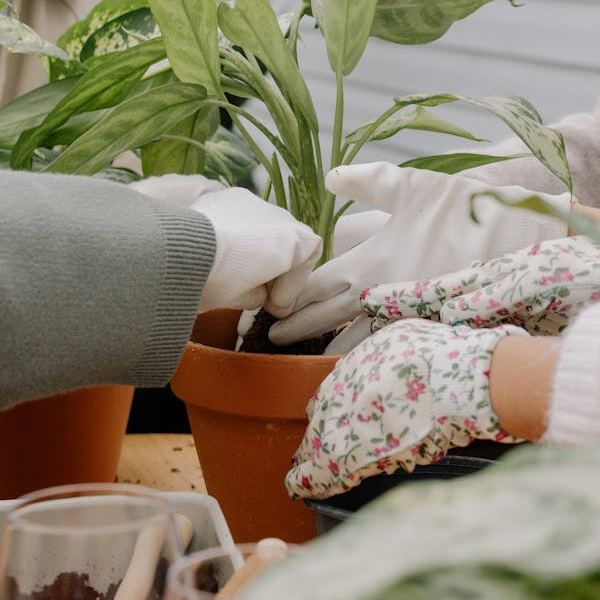Introduction:

Having a beautiful and thriving garden is a dream for many homeowners and gardening enthusiasts. Whether you are a seasoned gardener or just starting out, creating a great garden requires planning, dedication, and the right knowledge. In this comprehensive guide, we will explore various tips, techniques, and strategies to help you transform your garden into a stunning oasis of beauty and tranquility.
- Planning Your Garden Design
Before you start planting, it’s essential to have a clear plan for your garden design. Consider factors such as the size of your garden, the amount of sunlight it receives, the type of soil, and your personal preferences. Sketch out a rough layout of your garden space, including areas for flower beds, vegetable patches, pathways, and any other features you envision. - Choosing the Right Plants
Selecting the right plants is crucial to the success of your garden. Consider factors such as your climate zone, soil type, and sunlight exposure when choosing plants. Opt for a mix of annuals and perennials to ensure year-round color and interest in your garden. Native plants are also a great choice as they are well-adapted to your local environment and require less maintenance. - Soil Preparation and Maintenance
Healthy soil is the foundation of a great garden. Test your soil to determine its pH level and nutrient content, and amend it as needed with organic matter such as compost or manure. Regularly mulch your garden beds to retain moisture, suppress weeds, and improve soil structure. Consider using natural fertilizers to provide essential nutrients to your plants without harming the environment. - Watering and Irrigation
Proper watering is essential for the health of your plants. Water deeply but infrequently to encourage deep root growth and drought tolerance. Consider installing a drip irrigation system or soaker hoses to deliver water directly to the roots of your plants while minimizing water waste. Be mindful of local watering restrictions and adjust your watering schedule based on weather conditions. - Pest Control and Disease Management
Dealing with pests and diseases is an inevitable part of gardening. Implement integrated pest management practices such as attracting beneficial insects, using physical barriers, and practicing crop rotation to minimize pest damage naturally. Regularly inspect your plants for signs of disease or infestation and take prompt action to prevent further spread. - Pruning and Maintenance
Regular pruning is essential to keep your garden looking neat and healthy. Prune dead or diseased branches, shape overgrown shrubs, and deadhead flowers to promote continuous blooming. Keep an eye on weeds and remove them promptly to prevent competition for nutrients and water. - Creating Outdoor Living Spaces
Enhance the beauty and functionality of your garden by creating outdoor living spaces such as patios, decks, or seating areas. Incorporate elements like pergolas, arbors, or trellises to add vertical interest and provide support for climbing plants. Consider adding lighting elements to extend the usability of your garden into the evening hours.
what are some common mistakes to avoid when starting a garden
Some common mistakes to avoid when starting a garden include:
- Setting too lofty of a gardening goal: Avoid starting with a garden that is too large, especially as a beginner. Start small and think about your long-term goals.
- Not interplanting: Embrace interplanting to pair companion plants, reduce pests, and promote biodiversity in your garden.
- Overcrowding plants: Be mindful of spacing between plants to allow them room to grow and thrive naturally.
- Planting too soon (or too late): Timing is crucial when planting your garden to avoid stressing plants or losing crops due to frost or extreme temperatures.
- Not figuring out what kind of soil you have: Understanding your soil type is essential for successful gardening. Test your soil and amend it accordingly for optimal plant growth.
- Creating a border that’s too small or large: Ensure proper depth in your garden borders to accommodate the size and growth of your plants.
- Planting in the wrong place: Choose plant locations based on their sunlight and water requirements to ensure their health and growth.
- Buying too few plants (or too many): Plan carefully and space out your plants appropriately to avoid overcrowding or sparse areas in your garden.
- Planting for flowers instead of foliage: Focus on foliage diversity in your garden to add texture, color, and interest beyond just flowering plants.
- Improper watering: Avoid overwatering or underwatering your plants by checking soil moisture levels regularly and adjusting watering accordingly
Conclusion:
Creating a great garden is a rewarding endeavor that requires time, effort, and dedication. By following the tips outlined in this guide, you can transform your outdoor space into a vibrant oasis that brings joy and beauty to your life. Remember to plan carefully, choose the right plants, maintain healthy soil, water efficiently, manage pests effectively, prune regularly, and create inviting outdoor living spaces. With patience and perseverance, you can make your garden truly great.





